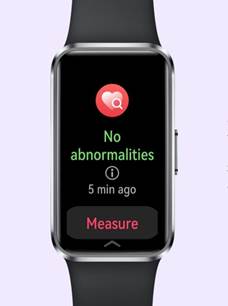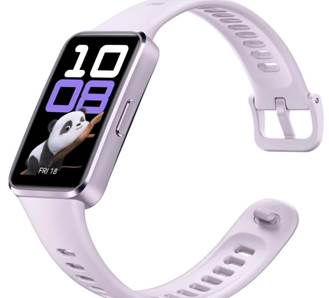Choosing the right smart
band for your lifestyle can be overwhelming with endless options on the market.
Whether you are an athlete, a fitness enthusiast, or someone looking to monitor
daily activities, selecting a smart band that aligns with your needs is
crucial. Key factors such as fitness tracking capabilities, compatibility with
devices, and design comfort will impact your choice. The Smart band offers a balance of
advanced health features and user-friendly design, making it a solid choice for
those looking for reliable fitness tracking. This guide aims to simplify your
decision-making process by breaking down essential features and considerations,
ensuring that you find the perfect smart band to support your unique lifestyle.

Key Features to Look for in a Smart
Band
Fitness
Tracking Capabilities
A smart band’s primary purpose is
to track your fitness activities. When considering your options, focus on the
types of fitness metrics the band can track. Look for features such as step
count, distance traveled, calories burned, and activity-specific tracking like
running, cycling, or swimming. Advanced tracking options may include sleep
monitoring and stress management tools. Ensure the band offers accurate and
reliable data to help you meet your fitness goals. A smart band that provides
detailed insights and progress reports can be a valuable companion for anyone
looking to enhance their fitness regimen.
Heart
Rate Monitoring
Heart rate monitoring is a vital feature in any smart
band, offering insights into your cardiovascular health. Continuous heart rate
tracking allows you to monitor your heart rate throughout the day, during
workouts, and even while sleeping. This feature helps you understand your
resting heart rate, active heart rate zones, and overall heart health. Choose a
smart band with accurate sensors and algorithms, as precision is crucial for
heart rate monitoring. If you’re serious about your fitness, a smart band with
advanced heart rate features like VO2 max and heart rate variability can
provide deeper insights into your performance and recovery.
Battery
Life and Charging Time
Battery life and charging time are
critical factors to consider when choosing a smart band. You want a device that
won’t require frequent charging, especially if you have a busy lifestyle. Look
for smart bands that offer at least five to seven days of battery life on a
single charge. Additionally, consider the charging time—how long it takes to
fully charge the device. Fast charging can be a convenient feature, allowing
you to quickly power up your band before heading out for your next activity. A
smart band with long-lasting battery life and efficient charging can help you
stay on top of your fitness goals without interruptions.
Compatibility
with Your Devices
Smartphone
Compatibility
When
selecting a smart band, ensure it is compatible with your smartphone. Most
smart bands connect to your phone via Bluetooth and synchronize data with a
companion app. It’s essential to check if the smart band supports your phone’s
operating system—whether it’s iOS, Android, or both. Compatibility ensures
seamless integration, allowing you to receive notifications, control music, and
access health data. A smart band that syncs effortlessly with your smartphone
enhances your overall user experience and keeps you connected on the go.
App Ecosystem
The
app ecosystem is another important factor when choosing a smart band. The
companion app should be user-friendly and provide valuable insights into your
fitness data. Look for apps that offer customizable dashboards, detailed
analytics, and personalized recommendations. Some companion apps integrate with
popular fitness apps, which can be beneficial if you already use these
platforms. A robust app ecosystem can significantly enhance the functionality
of your smart band, providing you with a comprehensive view of your health and
fitness progress.
Integration
with Other Wearables
Consider
the smart band’s ability to integrate with other wearables you might own, such
as smartwatches or wireless headphones. Integration allows you to create a
connected ecosystem of devices that work together harmoniously. For instance,
if you own a smartwatch, your smart band can complement it by providing
additional fitness tracking features. Some smart bands can also sync with
wireless headphones, making it easier to control music or receive voice cues
during workouts. A smart band that integrates seamlessly with other wearables
offers a cohesive and enhanced user experience.
Smart
Band Design and Comfort
Display
and User Interface
The
display and user interface play a significant role in your overall experience
with the smart band. Look for a clear, bright, and easily readable display,
even in sunlight. The user interface should be intuitive and straightforward to
navigate, allowing you to access your data quickly. Touchscreens, physical
buttons, or a combination of both can be used for navigation. Ensure the
display provides essential information at a glance, such as time,
notifications, and key fitness metrics. A well-designed display and user
interface will make your smart band more enjoyable to use daily.
Band
Material and Comfort
Comfort
is a crucial consideration, as you’ll be wearing your smart band for extended
periods, including during workouts and sleep. Pay attention to the band
material—it should be lightweight, breathable, and hypoallergenic to prevent
skin irritation. Silicone, fabric, and leather bands are popular options, each
offering different levels of comfort and durability. Some smart bands allow you
to switch out straps, giving you the flexibility to choose different materials
and styles. Ensure the band fits securely on your wrist without being too tight
or loose, providing maximum comfort throughout the day.

Water Resistance
Water
resistance is an essential feature, especially if you plan to use your smart
band during swimming, showering, or intense workouts where you’ll sweat. Check
the water resistance rating of the smart band, often denoted by ATM (atmospheres)
or IP (Ingress Protection) ratings. A 5 ATM rating typically means the band can
withstand depths up to 50 meters, suitable for swimming. An IP rating will
indicate protection against water and dust. A water-resistant smart band
ensures durability and enables you to track aquatic activities without worrying
about damaging the device.
Conclusion
Selecting
the right smart band for your lifestyle involves considering several key
features and ensuring compatibility with your devices. Assess your fitness
tracking needs, look for accurate heart rate monitoring, and choose a band with
a long battery life. Ensure compatibility with your smartphone and app
ecosystem, and consider how well the band integrates with other wearables.
Design and comfort are equally important, with a focus on display, band
material, and water resistance. By evaluating these factors, you can find the
perfect smart band that seamlessly fits into your lifestyle, helping you stay
active, connected, and healthy.
